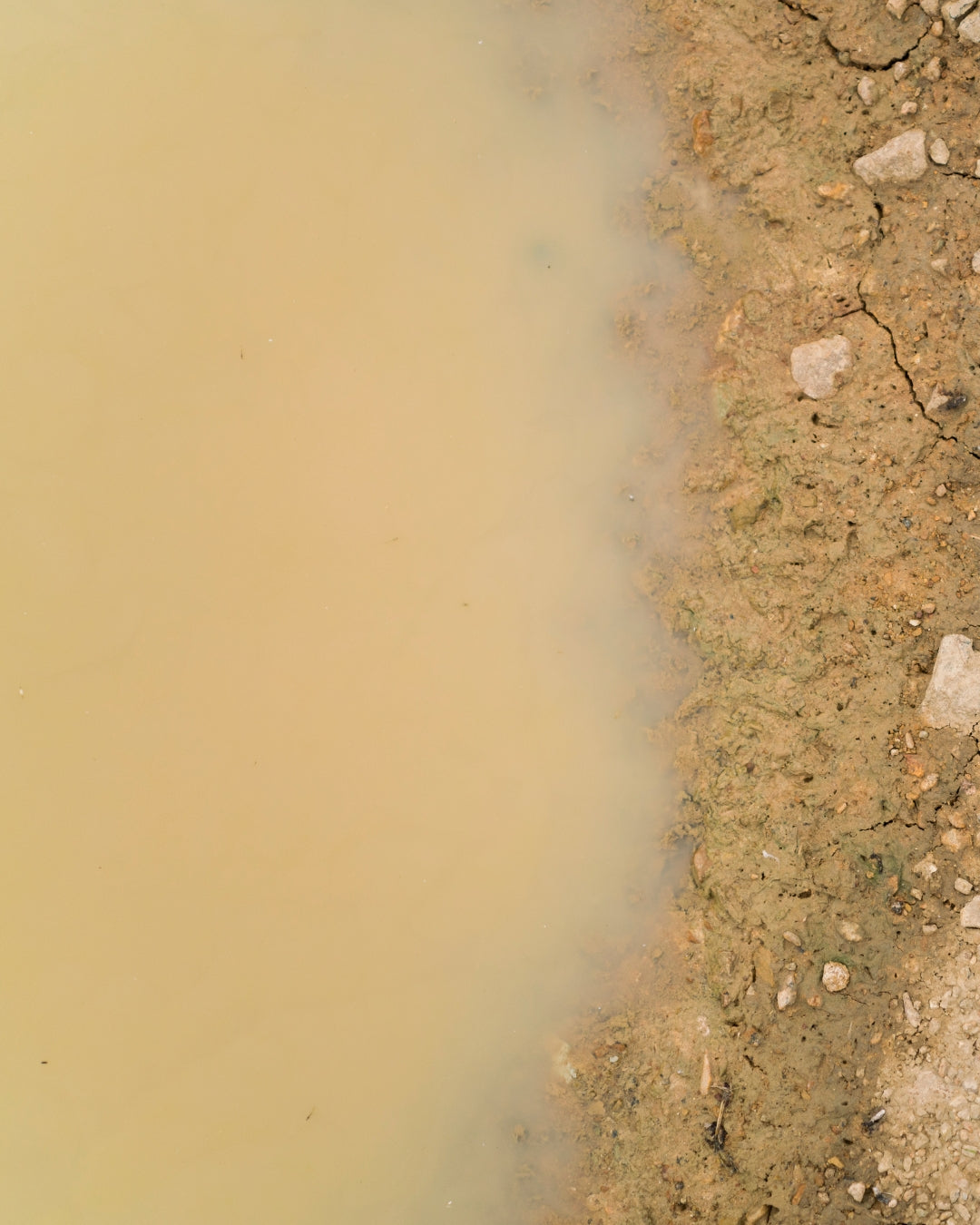
Hydrophobic Soil & How to Fix It
Share
Hydrophobic soil is a problem. Growing vegetables, raising flowers, caring for a lawn – all made increasingly difficult by soil that just won’t accept what you’re trying to give.
This nuisance-soil is the result of a few factors.
Waxy coating left over from dying microbial life, and fallen plant matter not breaking down completely as a result, leave oils and residues that act as waterproofing. These hydrophobic substances coat soil particles, making it difficult for water to penetrate beyond the surface.
Poor soil structure with low organic content is a common cause of hydrophobic behavior. Sandy soils tend to lack the organic matter needed to retain moisture, while dense or compacted soils can develop hydrophobic traits when microbial activity declines and pore spaces collapse. Potting mixes are especially vulnerable – when left to dry out without regular rehydration and organic supplementation, they can become resistant to water absorption, especially under prolonged heat, wind, or direct sunlight. Even indoor plants aren’t immune: once a potting mix becomes hydrophobic, water can appear to run straight through without ever wetting the root zone.
Aside from a lack of hydration and nutrition for your plants, hydrophobic soil also leads to fertilizer waste through run-off. In addition to the lost efficacy and wasted money, garden and agricultural run-off can pose environmental risks to other parts of your garden and the surrounding wildlife and water tables.
To fix hydrophobic soil, you’ll need to take into consideration which factor is most at play in your situation.
Begin by moistening the surface gradually. Applying a light mist or using a surfactant (wetting agent) can help water penetrate the waxy or crusted top layer without immediate runoff. Once the surface begins to accept water, incorporate well-decomposed organic material to improve moisture retention and structure. Both our Great Big Roses and Great Big Tomatoes are an excellent addition to soil at this point, as they contain both composted organic matter and a natural surfactant (humic acid). These materials not only help rehydrate the soil but also feed the microbial life essential for long-term soil health.
In lawns or severely compacted areas, mechanical aeration may ultimately be necessary to reintroduce pore space. Repeated applications of organic material, paired with shallow watering, will help recondition the soil for long-term infiltration and microbial activity. Bettr Lawn is specifically designed for increasing aeration and water absorption in lawn soil. It also contains a natural surfactant, and organic compound that improves soil structure in all soil types. Mulching around garden beds can also help retain surface moisture and create better conditions for microbes to return.
Rehydrating hydrophobic soil isn’t about flooding it – it’s about giving it the biological and structural support it needs to want water again. Remember: layer in organic matter, keep it moist (but not waterlogged), and restore the microbial balance. Over time, water will begin to infiltrate properly, microbial life will prevent new build-up, and your plants will be able to draw on the nutrients and hydration they’ve been missing.

